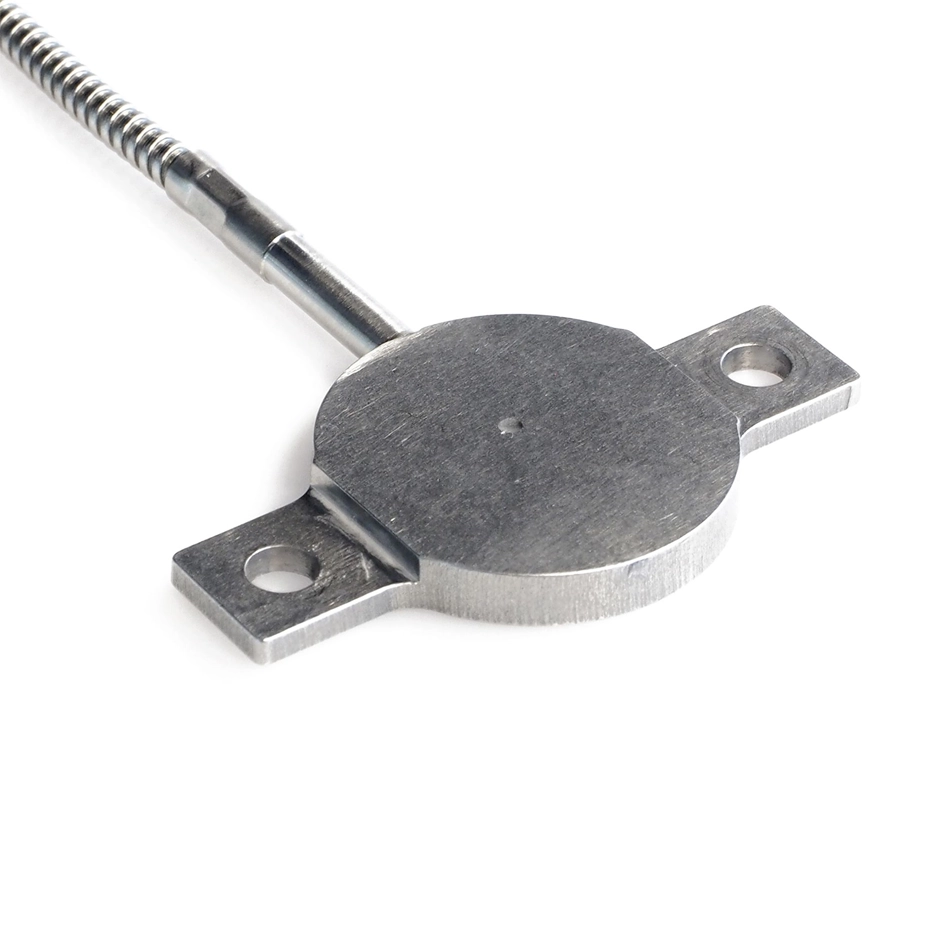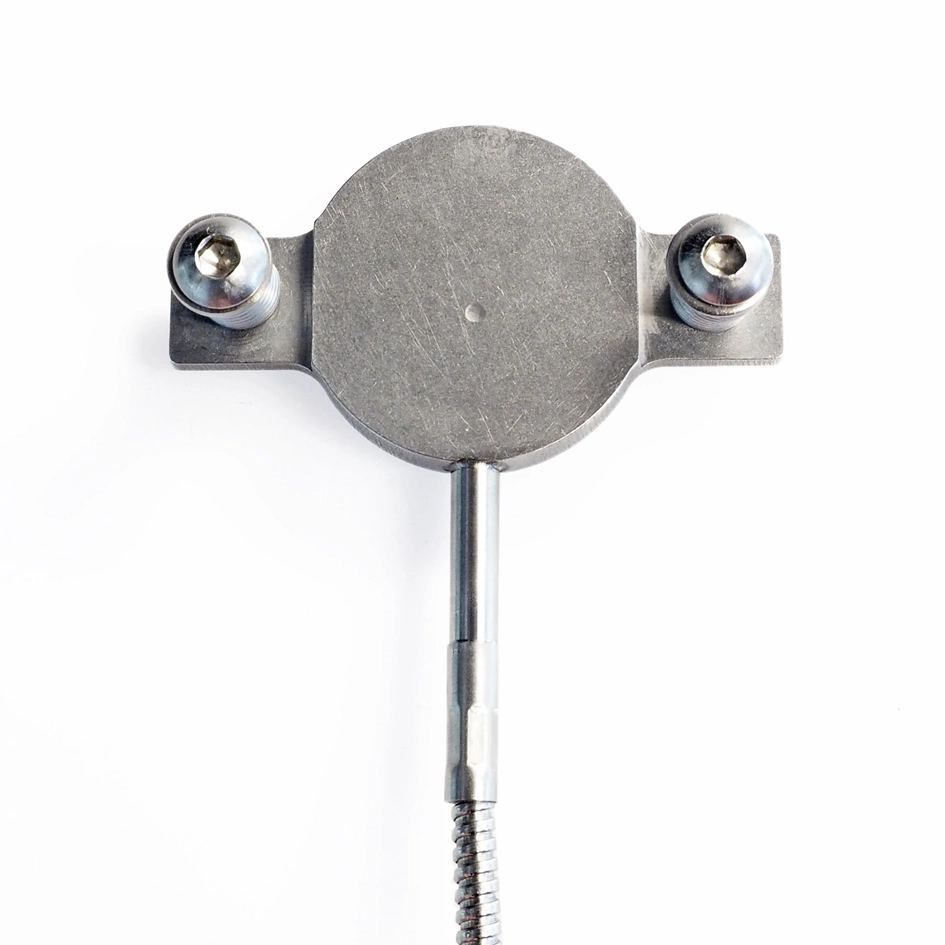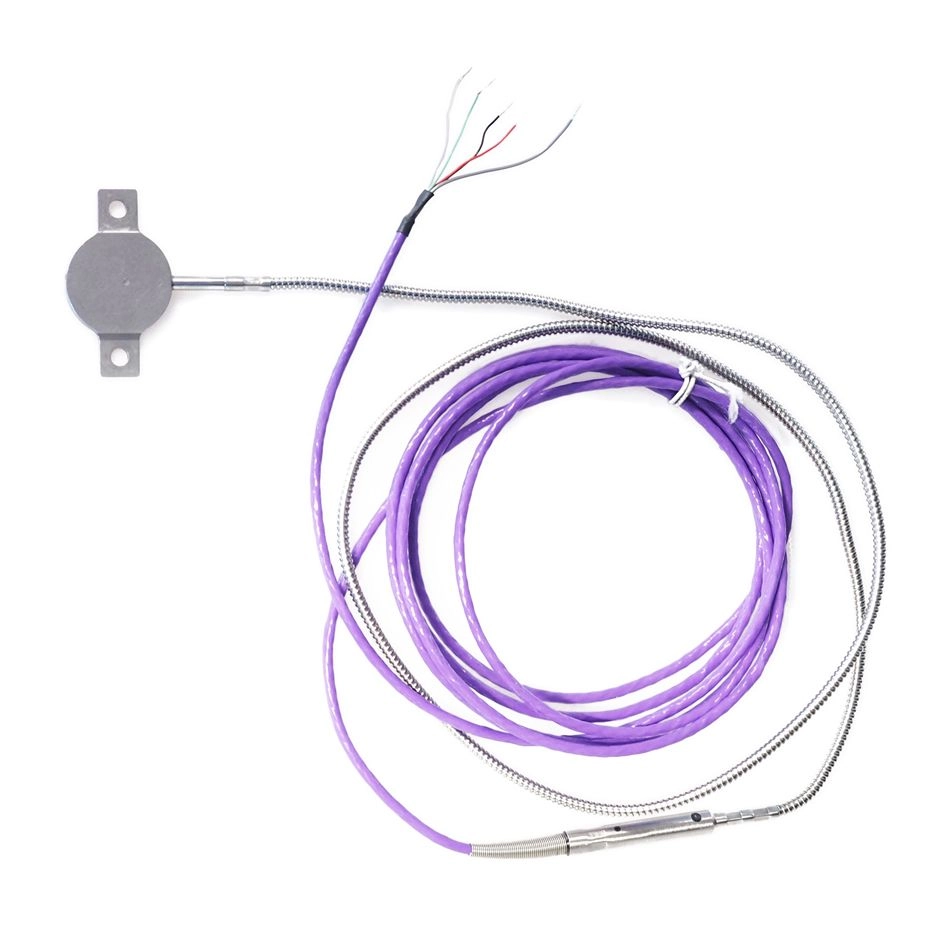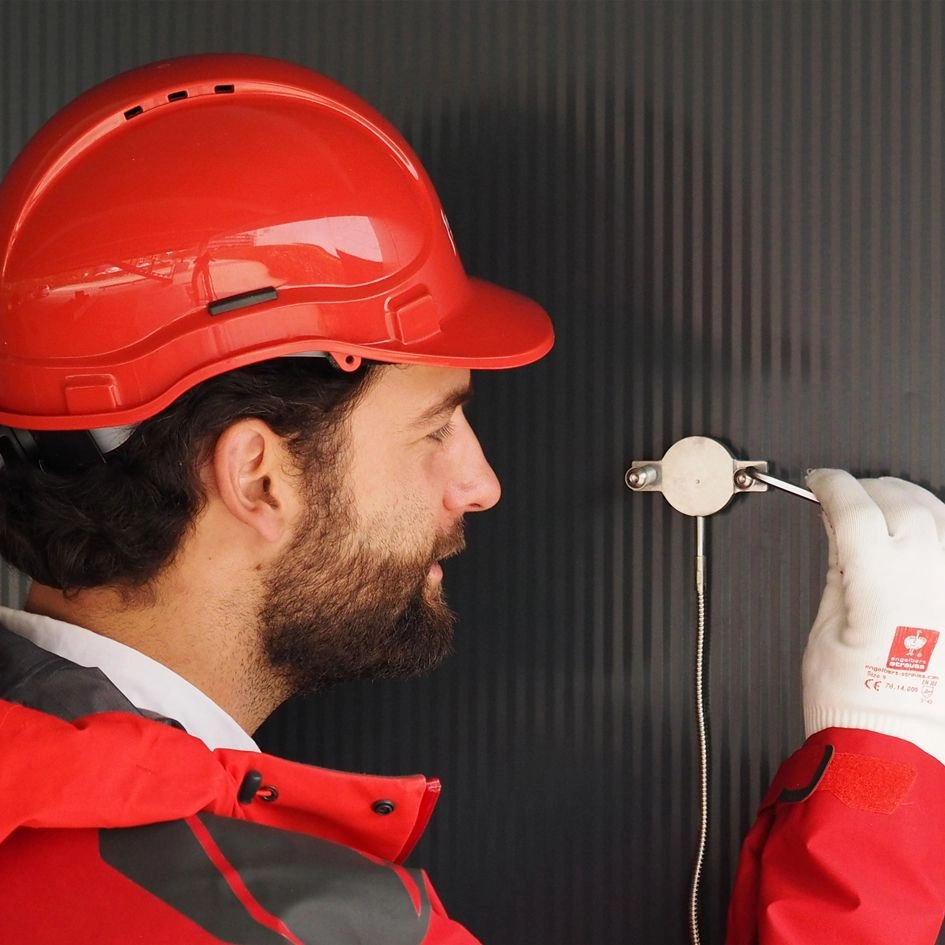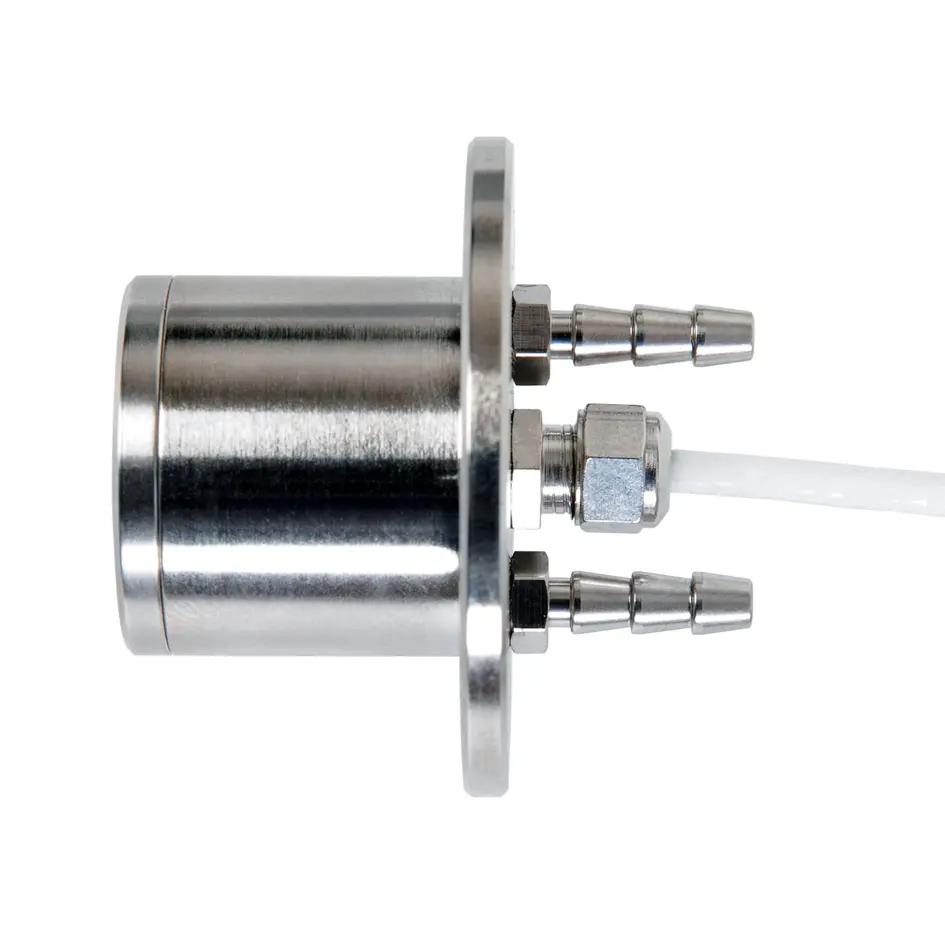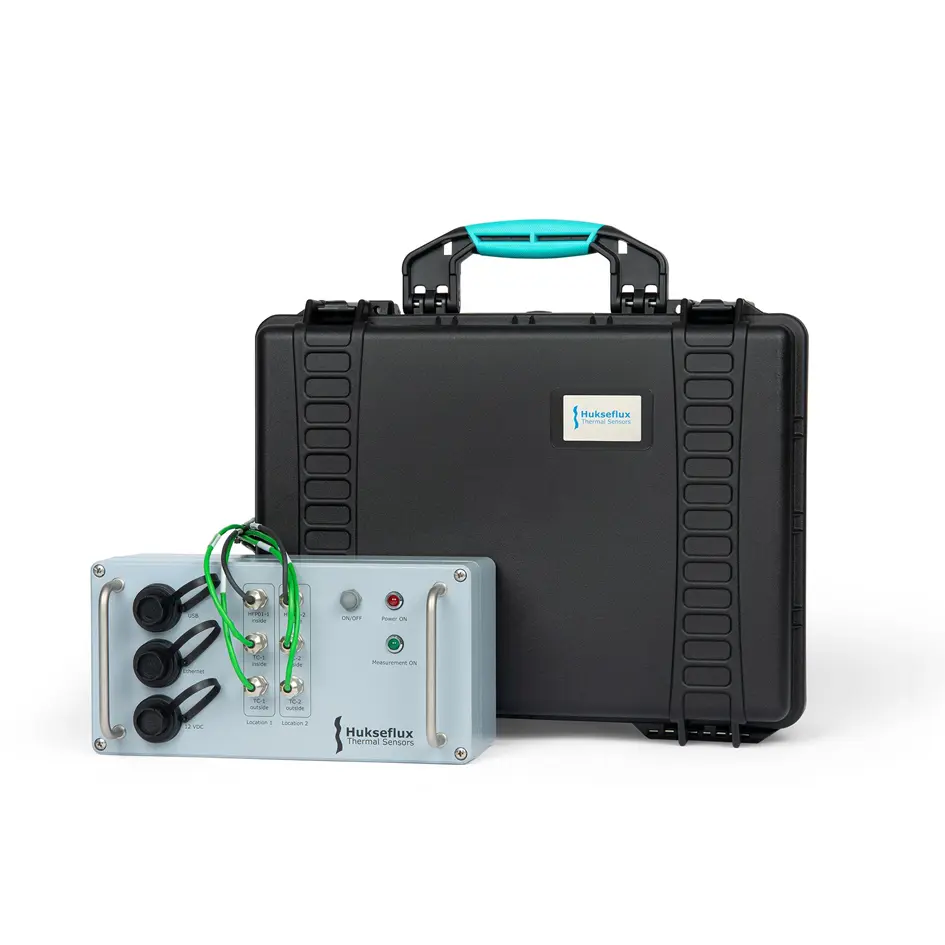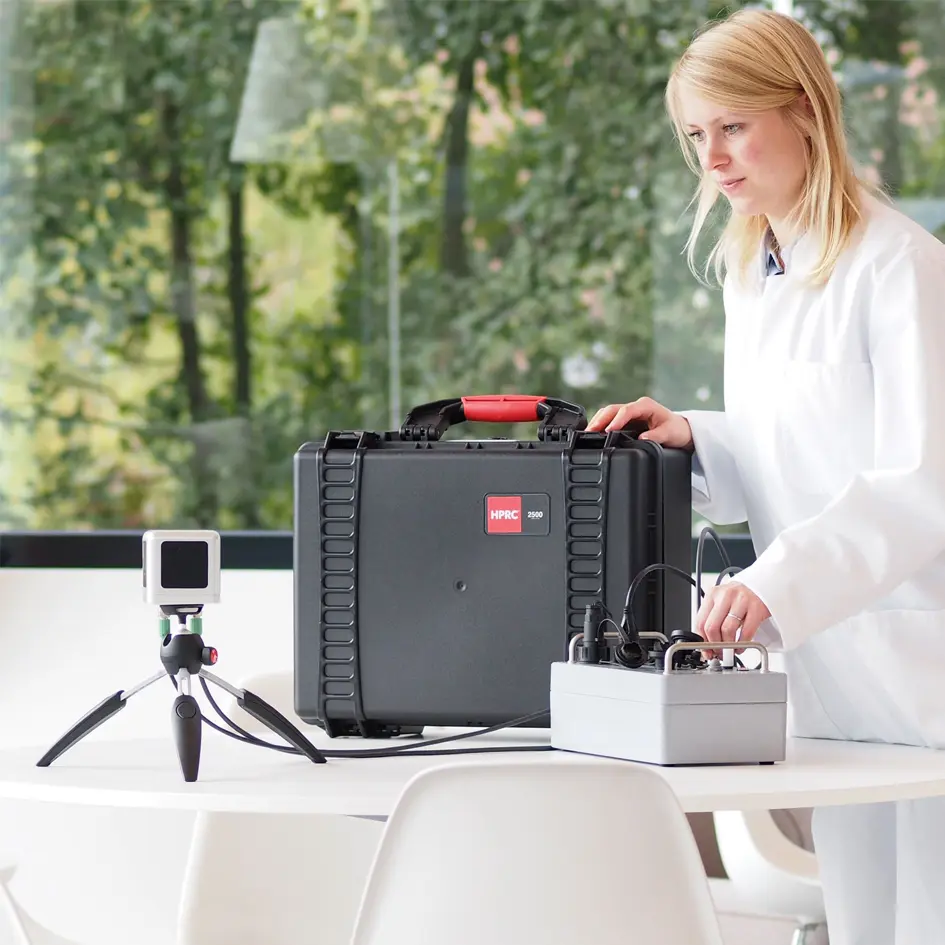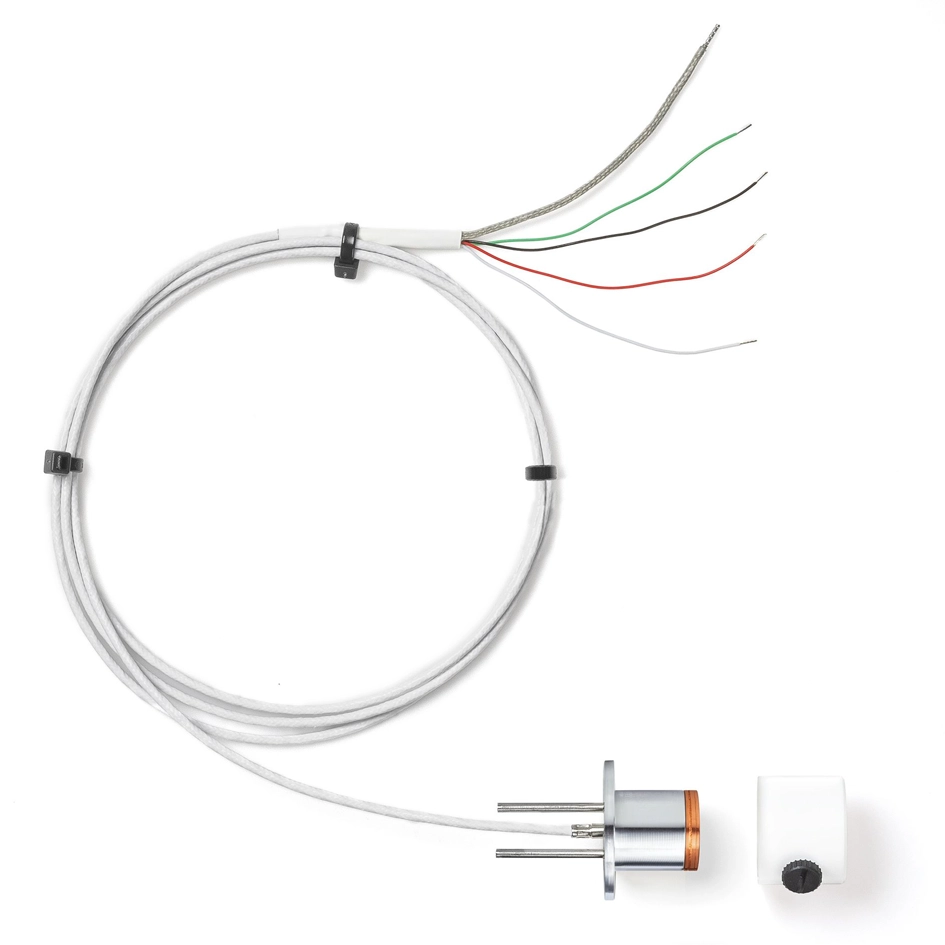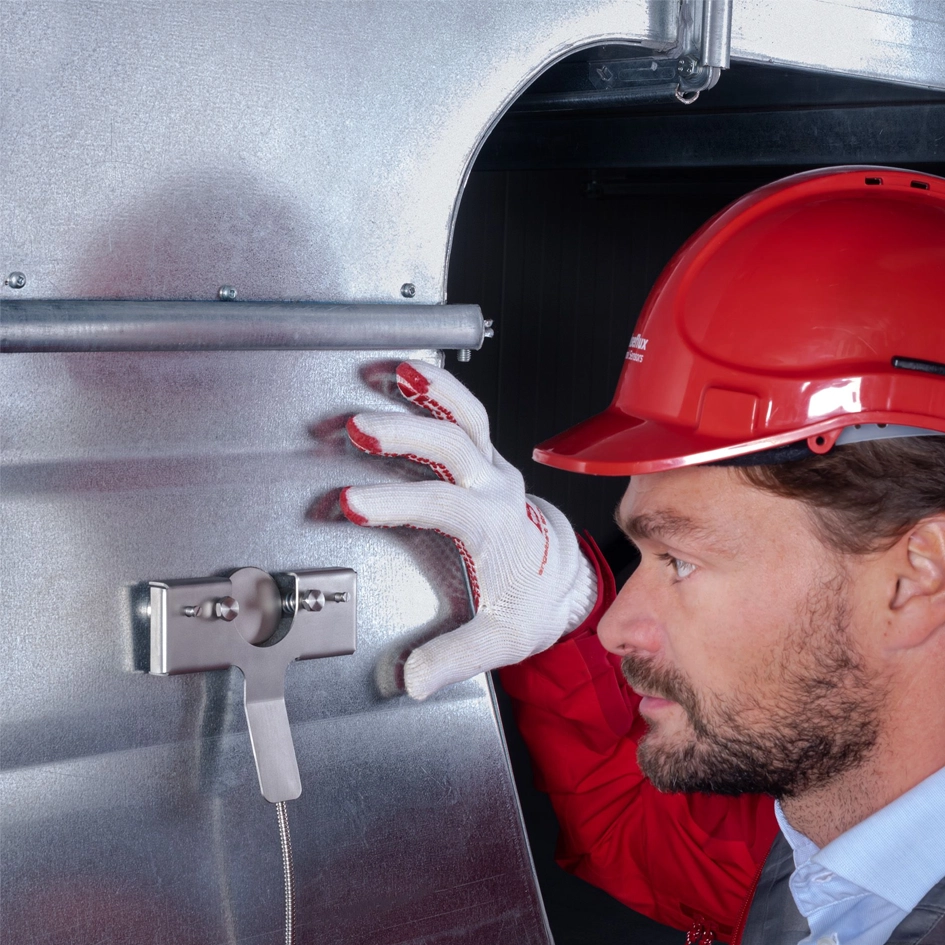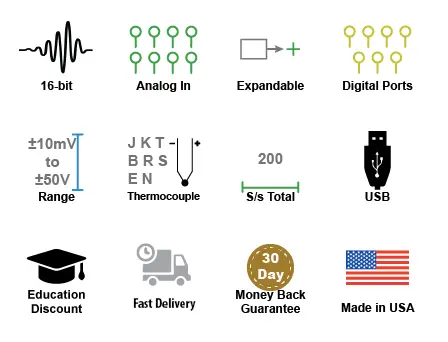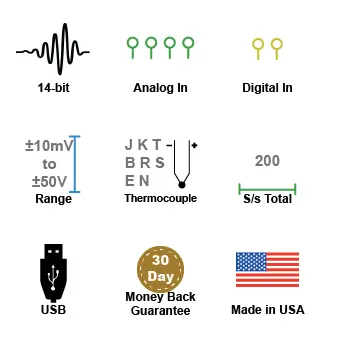Description
Specifications
| Measurand | heat flux, temperature |
|---|---|
| Measurement range | (-1000 to +1000) x 10³ W/m² |
| Sensitivity (nominal) | 9 x 10⁻⁹ V/(W/m²) |
| Heat flux sensor | thermopile |
| Calibration traceability | to SI units |
| Temperature sensor | thermocouple type K |
| Recommended # of sensors | 2 per measurement location |
| Rated operating temperature ranges | : |
| Sensor and high temperature cable | -30 to +900 oC |
| Optional black coating | -30 to +170 oC |
| IP protection class | IP67 |
| Standard cable lengths | : |
| high-temperature cable | 1 m (see options) |
| low-temperature extension cable | 3 m (see options) |
| Order code | IHF01 – high temperature cable length in m – low temperature extension cable length in m |
| Options | • Longer cable (specify total cable length for both cable types in m) • Black coating • EC type examination certificate (ATEX) II 2 G EEx d IIC T6 • Connector at IHF01 cable end • Low-temperature extension cable with 2 connectors, matching cable connector and chassis connector chassis connector with internal wiring (colour code of wiring identical to cable colour code) |
Overview
IHF01 measures heat flux and surface temperature of industrial equipment
IHF01 measures heat flux and surface temperature of industrial equipment like furnaces, boilers, fluidised beds, distillation columns and ovens. The sensors inside IHF01, a thermopile and a thermocouple, are protected by a fully sealed stainless steel body. It is suitable for long-term use at one location as well as repeated installation when a measuring system is used at multiple locations. IHF01 measures heat flux through the object on which it is mounted, in W/m², as well as the temperature in °C. The sensors in IHF01 are a thermopile and a type K thermocouple. The thermopile measures the local heat flux. The thermocouple measures the absolute temperature of the surface on which IHF01 is mounted, as well as the approximate sensor body temperature. A thermopile and a thermocouple are passive sensors; they do not require power.
Operation
Using IHF01 is easy. It can be connected directly to commonly used data logging systems. The heat flux, in W/m², is calculated by dividing the IHF01 output, a small voltage, by the sensitivity. The sensitivity is provided with IHF01 on its product certificate. Equipped with heavy duty cabling, and having a fully stainless steel casing so that moisture does not penetrate the sensor, IHF01 has proven to be very reliable. It survives long-term outdoor installation.
Suggested Use
• Trend-monitoring and comparative measurement of heat flux and surface temperature in industrial installations. See also model IHF02, an industrial heat flux sensor with higher sensitivity.
Areas of Application
Industrial monitoring and control / heat flux and heat transfer measurement
Scientific research / heat and heat transfer measurement
Frequently asked questions
How to measure heat flux?
Heat flux sensors measure energy flux onto or through a surface in [W/m²].
The source of the heat flux may be:
- conduction
- radiation
- convection
Convective and conductive heat transfer are associated with a temperature difference. Heat always flows from a source to a sink, from a hot to a cold environment. Convective and conductive heat flux is measured by letting this heat flow through the sensor. Radiative flux is measured using heat flux sensors with black absorbers. The absorbers converts radiative to conductive energy. Hukseflux started in 1993 with sensors for measurement of heat flux in soils and on walls. In the course of the years, we have added specialised sensors and systems for many other applications.
Heat flux sensors manufactured by Hukseflux are optimised for the demands of different applications:
- rated temperature range
- rated heat flux range
- sensitivity
- response time
- chemical resistance, safety requirements
- size, shape and spectral properties
Hukseflux is the world market leader in heat flux measurement. We have prepared a white paper briefly explaining the fundamentals of measuring with heat flux sensors. It also offers general directions what to watch out for and some, perhaps surprising, applications of heat flux sensors. Take a look at our white papers.
What matters most when measuring with a heat flux sensor?
There are quite a few general considerations when starting a heat flux measurement.
- Representativeness in time and space; average!
A heat flux sensor measures at a certain location. Is this location representative of what you need to measure? If possible, use a relatively large sensor, rather than a small one, and consider use of multiple sensors. Thermal processes often have large time constants; instantaneous measurements may be misleading. Average to get the full picture. - Optical properties
When heat flux sensors also measure radiation, pay attention to the surface color. If needed paint the sensor surface. Please mind that shiny metallic surfaces reflect both infra-red and visible radiation. Paints may have different colors in the visible range, but are usually “black” absorbers in the far-infra-red. - Sensor thermal resistance
A heat flux sensor distorts the local heat flux. In order to minimize this effect, use the sensor with the lowest possible thermal resistance. - Edge effects
A heat flux sensor locally distorts the heat flow pattern, in particular around the edges of the sensor. A passive guard, i.e. a non-sensitive part around the sensor is essential to avoid errors due to edge effects.
There are more characteristics that matter. Please find them in our white paper on heat flux fundamentals and applications.
Which sensor(s) to use for surface energy flux measurement?
Hukseflux manufactures a range of sensors for surface energy flux measurements. All have proven reliability.
These state-of-the-art sensors are made for the global fluxnet community:
- NR01 is a market leading 4-component net radiometer.
- HFP01 and HFP01SC measure soil heat flux.
- STP01 offers an accurate temperature profile measurement.
- TP01 is the leading sensor for soil thermal conductivity.
Sensors made by Hukseflux are designed for compatibility with most common datalogger models. For many models we have example programs and wiring diagrams available.
How to measure R-value and U-value of buildings?
On-site measurements of thermal resistance, R, are often applied in studies of buildings. Alternatives are to measure its inverse value, the thermal conductance which is called the Λ-value, or the thermal transmittance which includes ambient air boundary layer thermal resistance, the U-value. The measurements of R are based on simultaneous time averaged measurement of heat flux Φ and differential temperature, ΔT, (using two temperature sensors on each on a different side of the wall).
R = ΔT / Φ
Hukseflux provides a range of sensors and measuring systems for use in measurement of the energy budget of buildings and characterization of construction materials.
HFP01 heat flux sensor and TRSYS01 measuring system are widely used for on-site measurements on walls, windows and other construction elements in building physics.
- HFP01 can be used for in-situ measurement of building envelope thermal resistance (R-value) and thermal transmittance (H-value) according to ISO 9869, ASTM C1046 and ASTM 1155 standards. HFP01 is the world’s most popular sensor for heat flux measurement in the soil as well as through walls and building envelopes. HFP01 measures heat flux through the object in which it is incorporated or on which it is mounted, in W/m². More information? Visit the HFP01 product page.
- TRSYS01 is a high-accuracy system for on-site measurement of thermal resistance, R, thermal conductance, the Λ-value, and thermal transmittance, the U-value, of building envelopes. TRSYS01 is mostly used for measurements according to standard practices of ISO 9869 and ASTM C1155 / C1046. The system is equipped with high-accuracy electronics, two heat flux sensors of model HFP01 as well as two pairs of matched thermocouples. The two measurement locations provide redundancy, leading to a high level of confidence in the measurement result. The high accuracy of the heat flux sensors and temperature difference measurements ensures that TRSYS01 continues measuring when other systems no longer perform; in particular at very low temperature differences across the wall.
Where can I find complete heat flux measuring systems?
Hukseflux, market leader in heat flux measurement, offers both sensors and systems.
These measuring systems typically include a Measurement and Control Unit and one or more sensors for measuring heat flux as well as other measurands, such as temperature and humidity. Examples are the TCOMSYS01 Hot Cube thermal comfort measuring system, including a TCOM01 sensor, and the TRSYS01 measuring system, incorporating two HFP01 heat flux sensors and two pairs of matched thermocouples.
Cannot find what you are looking for? Please contact us.

